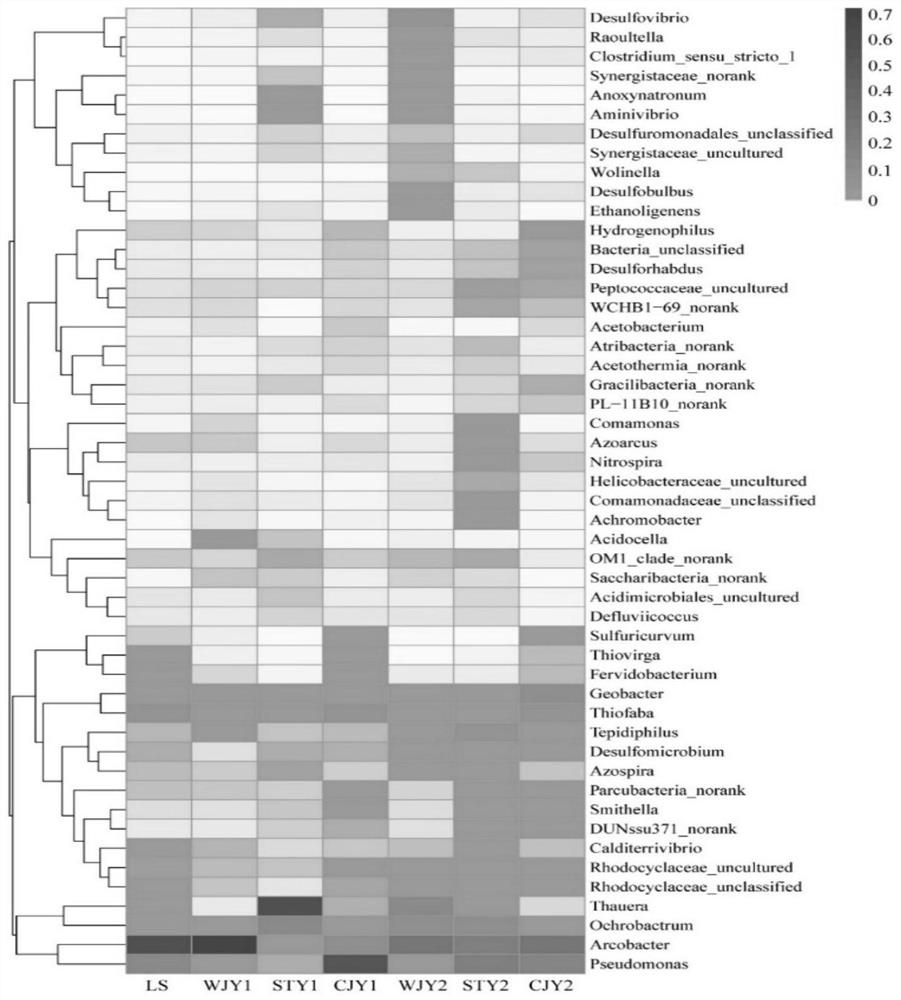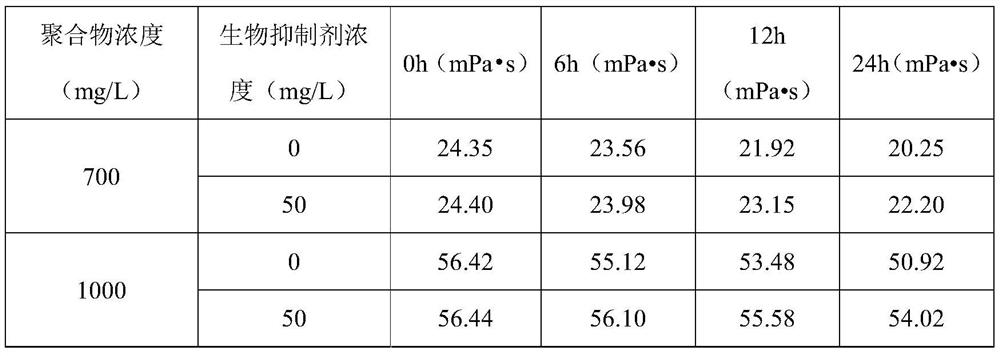Biological inhibitor suitable for controlling polymer viscosity loss in virtue of ecological regulation thought and use method thereof
A biological inhibitor, viscosity loss technology, applied in the direction of drilling compositions, chemical instruments and methods, etc., can solve the problems of bacterial resistance, microbial toxicity, etc., achieve obvious effects, ensure stable operation and production, and ensure flooding The effect of the oil effect
- Summary
- Abstract
- Description
- Claims
- Application Information
AI Technical Summary
Problems solved by technology
Method used
Image
Examples
specific Embodiment approach 1
[0017] Specific embodiment one: In this embodiment, a kind of biological inhibitor suitable for controlling the viscosity loss of polymer by the idea of ecological regulation is composed of 15% to 25% of denitrifying bacterial fermentation broth, 0.02% to 0.05% of nutrient elements and residual amount of water composition.
[0018] The living environment of denitrifying bacteria is similar to that of sulfate reducing bacteria, and they can survive in the same environment. When the nutrients in the living environment are limited, denitrifying bacteria have advantages in substrate affinity, reaction thermodynamics and low redox potential. Prioritize the use of limited nutrients, thereby inhibiting the growth of sulfate-reducing bacteria; denitrification intermediate NO 2 - , N 2 O and NO can inhibit SRB. NO 2 - Can inhibit the activity of sulfate reductase in SRB, N 2 O hinders the metabolic process of SRB, and NO is in a highly activated state, which is toxic to many ba...
specific Embodiment approach 2
[0024] Specific embodiment two: the difference between this embodiment and specific embodiment one is that the denitrifying bacterial fermentation liquid is one of the denitrifying bacteria Anoxynatronum, Aminivibrio, Comamonas, Azoarcus, Nitrospira, Helicobacteraceae, Comamonadaceae, Achromobacter and Thauera or mixed in any ratio and then fermented. Others are the same as the first embodiment.
[0025] Aminivibrio (Aminivibrio), Comamonas (Comamonas), Azoarcus (Azovibrio), Nitrospira (Nitrospira), Helicobacteraceae (Helicobacteraceae), Comamonadaceae (Comamonas ), Achromobacter (Achromobacter).
specific Embodiment approach 3
[0026] Specific embodiment three: the difference between this embodiment and specific embodiment one or two is that the fermentation method of denitrifying bacteria is as follows: the activated denitrifying bacteria are transferred to the denitrifying bacteria tank for cultivation, and the Nitrogen control ensures an anoxic environment, the pH is adjusted at 7.5-8.0, the culture temperature is 28-32°C, and the fermentation time is 48 hours. Others are the same as those in Embodiment 1 or 2.
PUM
 Login to View More
Login to View More Abstract
Description
Claims
Application Information
 Login to View More
Login to View More - R&D Engineer
- R&D Manager
- IP Professional
- Industry Leading Data Capabilities
- Powerful AI technology
- Patent DNA Extraction
Browse by: Latest US Patents, China's latest patents, Technical Efficacy Thesaurus, Application Domain, Technology Topic, Popular Technical Reports.
© 2024 PatSnap. All rights reserved.Legal|Privacy policy|Modern Slavery Act Transparency Statement|Sitemap|About US| Contact US: help@patsnap.com










